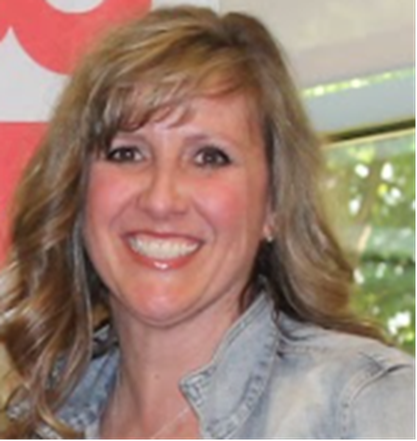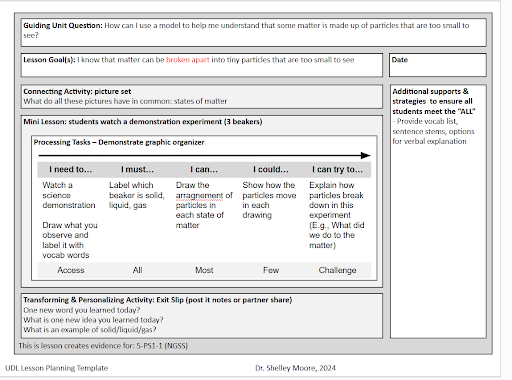

Inclusionary Leader Spotlight:
Kim Doughty, Principal Peter G. Schmidt Elementary, Tumwater School District
Leadership Experience:
Dean of Students/Internship at Washington Middle School in the Olympia School District, Assistant Principal at Hansen Elementary, and Centennial Elementary in the Olympia School District. Kim is currently in her seventh year as principal at Peter G. Schmidt in the Tumwater School District.
Professional Philosophy:
My professional philosophy revolves around empowerment, advocacy, partnership, and a deep commitment to understanding and supporting every individual student.
"I believe in being the change I wish to see in the world, particularly as a champion for all children. I strive to be a collaborative thought partner for families and staff, working together to create an environment where students' strengths and needs are understood and valued. I am committed to knowing each student deeply, recognizing and naming their unique qualities, and advocating for their holistic development and success."
What has surprised you about your inclusionary journey?
The acceptance of change is for both students and staff. The power that the Inclusion practice has brought to the community. The thought exchange and the willingness to lean in to create this change by the learning community.
Creative practices for meeting students' needs. All around student growth.
Is there anything you would have done differently?
I hope that I can always get 100% buy-in and true acceptance. I now recognize that some can most fast, while others may need time to adjust. It is important to meet them where they are while supporting the work. I also wish for the perfect world of support (staffing) to help with Inclusion.
What’s next for your school and Inclusion?
To continue moving forward and using Shelley Moore’s amazing resources with all our staff by creating Classroom Profiles of Learners with all staff at the start of the year and building upon that. (For access to all of the Dr. Shelley Moore series, please contact me.)
Leaders may reach out to Kim about inclusionary practices.
Inclusionary Practices School Spotlight
Walk into Peter G. Schmidt and you automatically belong! Upon walking in, you are greeted with all smiles, and it is typical to see the principal, Kim Doughty, walking around the school and checking in with teacher teams. The day I visited was no ordinary day at Peter G., as folks fondly call the mid-size elementary school in Tumwater, Washington. There was a special performance and an early release for teacher collaboration; this disruption in routine would be a challenge for any student and even some staff members. However, what is noteworthy is that the staff at Peter G. use this opportunity to ensure that all the students are planned for and included in the school-wide activity. For example, those with special needs were planned for by ensuring they had an active role. One student who found a disruption in the day difficult was fully included and had an active role in the student's performance. If you ask anyone, that is “just how things are done” at Peter. G.
It’s important to note that the school has been fully engaged in the AWSP Inclusionary Practices Project and Dr. Shelley Moore for its entirety - now in the fourth year.
This year has been especially relevant regarding drilling down to the classroom level. The Peter G. team consists of the principal, Kim, and a group of 5th-grade general education and special education team members. The team was made up of:
- 4/5 teacher: Erin Crabtree
- Special Education Teacher: Sarah Wernke
- PE Teacher: Carmen Luce
- Special Education Teacher: Jasmine Stray
- School Psychologist: Sherri Bentley
As part of this specialized coaching series with Dr. Shelley, they have made it to the fifth "P" phase she describes in her workshops:
- Place
- Presumed Competence
- Proximity and Participation
- Purpose
- Planned For
For these planning sessions, the team is focused on Planning for all. They began working backward from Next Generation Science Standards in order to present it in student-friendly language, highlighting essential vocabulary.
Universal Design for Learning
When asked by Dr. Moore, “What have you all been trying out?,” the special education teacher created a one-through-five Likert scale for students to identify the “size of the problem” with an accompanying solutions sheet to share with the general education teacher. This strategy was in response to a need for students to begin problem-solving social situations on their own. The general education teachers introduced the concept at their morning meeting with all students.
The team has noticed, since beginning to use this tool, that the students have been reflecting on how their peers are feeling and describing situations that could have been escalated. The team agreed that the tool was great for student reflection and was pleasantly surprised that something created to support one student with special needs has impacted the entire class and provided a baseline for students to communicate a problem in a way that others can easily understand. This is one example of how Universal Design is best practice for all students. Universal Design is a framework used to guide the design of learning environments to ensure they are both accessible and challenging for all students (CAST, 2018).
Later in the session, Dr. Moore asked the team to try a different lesson plan strategy. This planning tool allows students to start a task together and then take ownership of what steps they will take next; ownership is a key element of UDL Practices.
Dr. Moore explains, “If you all start in the same place, what is being presented will become either a prerequisite skill for some or a connection to previous learning for others,” without decreasing the challenge of the task.
With every student starting at the “I need to…” stage, students are granted basic and equal access to foundational information for the tasks at hand. Once all students have access to this information, the difficulty level can increase based on student needs and ownership. This creates an opportunity for students to support one another, provides a natural scaffold for students needing more time and support, and a student-driven approach to differentiation by guiding students to independently move forward on tasks in the “I must” level, which is the grade level standard.
For extension, most students will move on to the “I can” task, giving a few advanced students an opportunity with the “I could” advanced task. See an example of the lesson plan document below.

Dr. Moore emphasized the importance of students starting together and that this lesson design strategy is about what to add rather than what to take away or modify. She reinforces that teacher teams don’t have time to alter the curriculum. Using a continuum like the lesson design template allows all students to participate together and then will enable students to engage at their level. For example, at the beginning of the lesson, when students engage in a Processing task, the work they have to do and the new information has an opportunity to move from short to long-term memory.